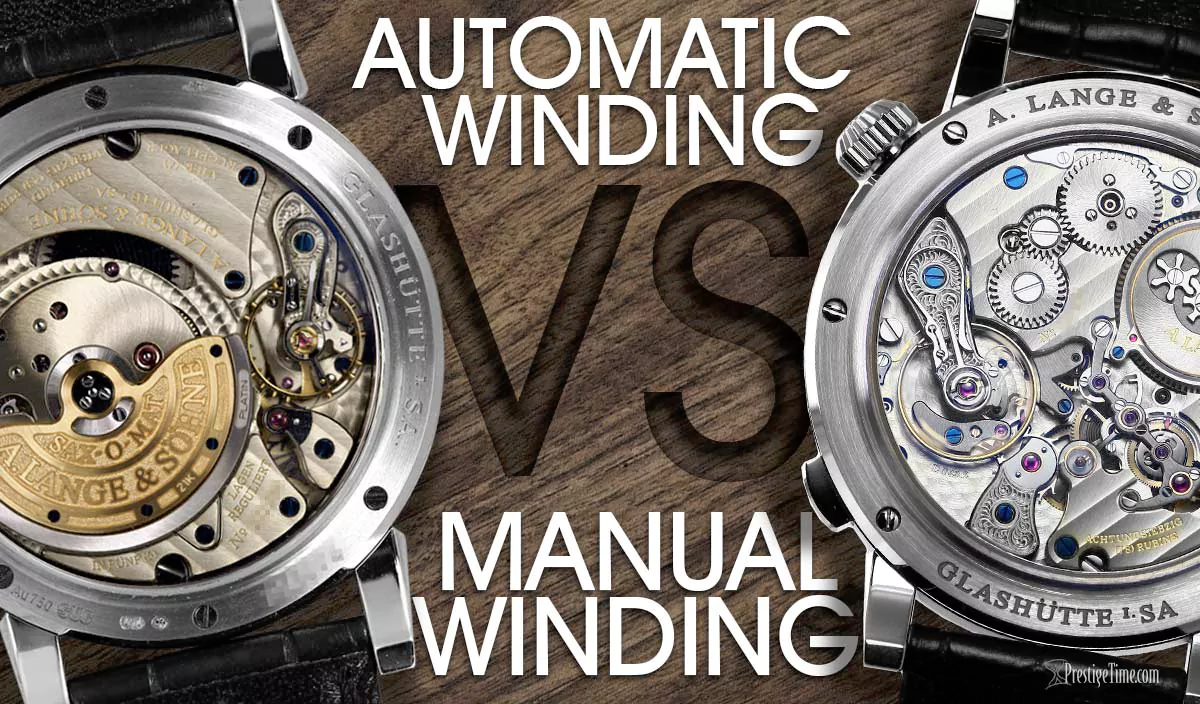
Manual Wind Watches VS Automatic Watches
Self-winding and hand-wound watchs: Let's explore why why people love either one and find out which is best for you.
"Should I Buy a Manual Wind Watch or an Automatic Watch?"
If only I had a dollar for every time someone asks me that...
Today we'll discuss the differences between automatic watches and hand-wound watches, also known as manual-wind watches. We'll also give you some insight on how you would use each of these as well as how these different types of watches work so that you'll appreciate these differences.
Manual Wind Watches VS Automatic Watches
All mechanical watches are powered by a tightly wound spring inside the watch. This spring is known as the mainspring. All mechanical watches require winding in order for them to work. The winding is typically done using the crown (a knob usually on the side of a watch case) or a winding key is some cases.
What is the mainspring?
The mainspring is a tightly wound spring inside the watch that holds a certain amount of tension similar to that of a tape measure. Through a series of gears, components, and screws, this tension is incrementally released. As tension is released, the energy generated from this release of this tension is transferred to other mechanical components. These components are called the gear train and escapement which essentially powers the watch and keeps everything moving. The rotor keeps the mainspring tightly wound to allow a steady flow of energy in the caliber (the mechanical movement).
Automatic watches require less of you in order to use them daily. An automatic watch (also known as a self-winding watch) allows you to use your mechanical watch without having to wind it each day. There are times though when you would have to wind an automatic watch but that is a topic for another time.
Manual wind watches are not self-winding like an automatic watch and therefore require that you wind them by hand or sometimes with a special tool in order for the watch to operate. Similar to the manual transmission where you need to be more hands-on to use it.
There was a time in history where every watch was a hand-wound watch and over the many years watchmaking evolved. Automatic watches, also known as self-winding watches were first conceived with the invention of the rotor and at the time, an automatic watch was called "perpétuel" (French for perpetual).
What's the Difference between Automatic Watches and Hand-Wound Watches?
On self-winding (automatic) watches, a rotor is attached to the watches movement so that when you move your wrist, the rotor spins and winds the watch back up again by tightening the mainspring. A hand-wound watch has no rotor and therefore needs to be wound by hand in order for it to work.
Click to learn more about self-winding watches.
Self-Winding / Automatic Watches
Pros:
- Many people buy automatic watches for the convenience of being able to just put the watch on and not have to worry about winding up the watch beforehand.
- As a result of the above mentioned, the overall watch market offers a much larger selection of automatic watches than hand-wound watches.
Cons:
- The rotor is weighted and because it's a weighted rotor, your watch will be heavier and thicker. For some people, this may be a con to others it's not but still worth mentioning.
- For people that love watching the gears go round through a transparent case back, the rotor can be a bit of an obstruction since it conceals a portion of the movement.
Hand Wound / Manual Wind Watches
Pros:
- For those who are fascinated by the micro-mechanics in a mechanical watch, a hand-wound watch with a transparent case back is a huge plus since it allows you to see more of the movement.
- The absence of the weighted rotor in a manual winding watch allows watchmakers to make the mechanical movement significantly thinner and more lightweight on the wrist.
Cons:
- Those who have no interest in the inner workings of their manual watches and just wear them to tell time may at times find the daily crown winding ritual a little tedious.
- Constantly turning the crown to wind the mainspring can cause the seal of the crown to wear prematurely (compared to automatic watches which wind mostly via the rotor).
If you enjoyed this comparison and feel that others would enjoy it too, please like and share it. Thanks!